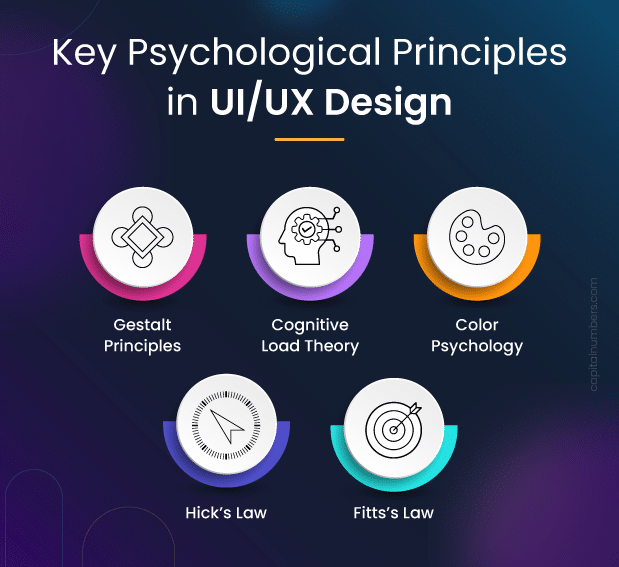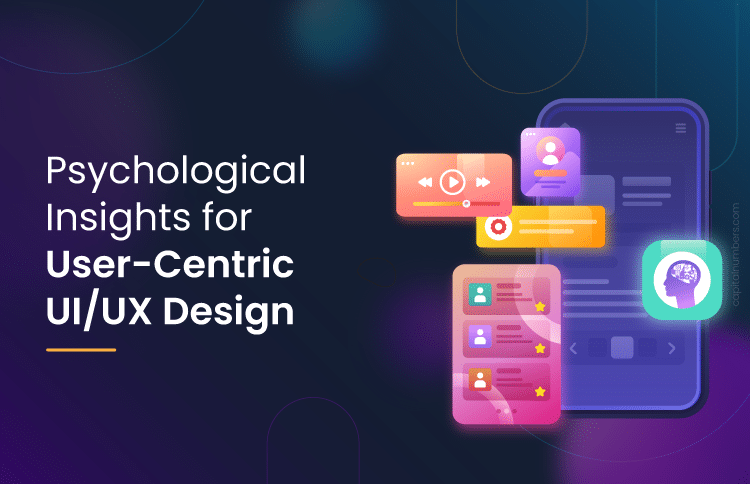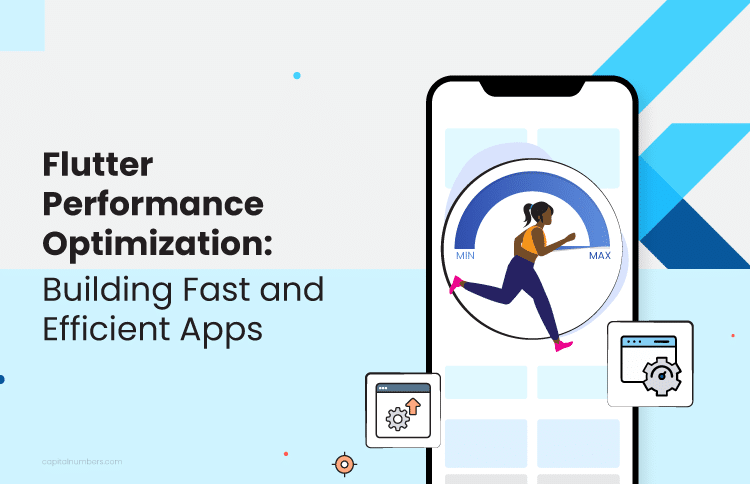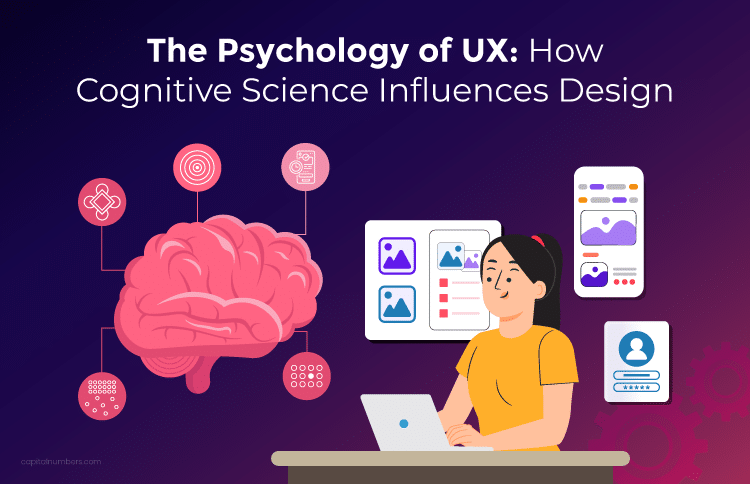Psychological Insights for User-Centric UI/UX Design
Table of Contents
Imagine walking into a store where everything is perfectly organized, easy to find, and just makes you feel good. You spend less time searching, enjoy the experience, and probably leave feeling satisfied with your purchases. This isn’t just luck; it’s the result of understanding what customers need and want.
The same idea applies to digital design. Creating effective UI/UX (User Interface/User Experience) designs is all about understanding human psychology—how people think, feel, and behave. When designers grasp these concepts, they can craft websites and apps that users love to interact with.
In this blog, we’re going to explore the fascinating world of psychology and see how it can be applied to UI/UX design. By the end, you’ll understand how to create interfaces that are not just visually appealing but also intuitive and user-friendly. We’ll examine various psychological principles that can transform your design approach and help you build digital experiences that resonate deeply with users.
What is UI/UX Design?
UI/UX design refers to the process of creating user interfaces (UI) and user experiences (UX) for digital products like websites and apps. UI design focuses on the look and feel, ensuring the interface is visually appealing and easy to navigate. UX design, on the other hand, is about the overall experience users have while interacting with the product, aiming to make it efficient, enjoyable, and user-friendly. Together, UI/UX design aims to create seamless, intuitive, and engaging digital experiences.
The Importance of Psychology in UI/UX Design
Understanding User Needs
Imagine using an app that feels like it was made just for you. Designers achieve this by understanding psychological principles, helping them identify and address what users need. For example, knowing people prefer simplicity can lead to clean, easy-to-navigate interfaces.
Improving User Engagement
Ever been so hooked on an app that you lose track of time? That’s the result of good design paired with psychology. By understanding what keeps users interested, designers can use rewards, feedback, and engaging visuals to make the experience more immersive and enjoyable, encouraging users to spend more time and come back often.
Enhancing Usability
Usability is about making a product easy and pleasant to use. Applying psychology helps designers create intuitive interfaces. For instance, placing important buttons where users naturally look or maintaining consistency in design makes interactions feel natural and effortless, improving overall usability.
Key Psychological Principles in UI/UX Design
Gestalt Principles
Gestalt psychology is all about how our minds group things together. Think of it like this: when you see a cluster of stars, you might perceive them as a constellation rather than individual stars. In UI/UX design, we use Gestalt principles to create designs that feel harmonious and organized. For example:
- Proximity: Elements close to each other are seen as related. Grouping buttons together on a website makes it clear they’re connected.
- Similarity: Items that look alike are perceived as part of a group. Using the same color for similar actions helps users understand their function.
- Continuity: Our eyes follow lines and curves. Designing a smooth flow from one section of a page to another guides users naturally.
- Closure: Our brains fill in gaps to see a complete image. Using incomplete shapes or outlines can make designs more engaging and intuitive.
Cognitive Load Theory
Cognitive load refers to the mental effort needed to use a product. The more effort required, the harder it is to use. High cognitive load can frustrate users and make them abandon the task. To reduce cognitive load:
- Simplify Design: Keep interfaces clean and straightforward. Avoid clutter.
- Use Familiar Patterns: Stick to design conventions users already know.
- Provide Clear Instructions: Guide users through complex processes step-by-step.

Hick’s Law
Hick’s Law states that the more choices we have, the longer it takes to make a decision. Think of a restaurant menu with too many options—it’s overwhelming! In design:
- Limit Options: Reduce the number of choices to make decisions quicker.
- Organize Choices: Group similar items together to simplify selection.
Fitts’s Law
Fitts’s Law is about how long it takes to move to a target area, like clicking a button. Bigger and closer targets are easier to hit. In UI design:
- Make Buttons Large: Ensure important buttons are big enough to click easily.
- Place Targets Close: Keep frequently used actions within easy reach.
Color Psychology
Colors can evoke emotions and influence behavior. For example, blue can feel calming, while red can evoke urgency or excitement. In design:
- Choose Colors Wisely: Use colors that align with the message or action you want to convey.
- Consider Accessibility: Ensure color combinations are easy to read and distinguish for everyone, including those with color blindness.
By understanding and applying these psychological principles, you can create UI/UX designs that are not only functional but also intuitive and enjoyable for users.
Are you looking to enhance your user experience with top-notch UI/UX design? Learn more about our UI/UX Design Services
Designing for User Emotions and Behaviors
Emotional Design
Emotional design is all about making users feel something when they interact with your product. Just like a memorable movie or a favorite song, a well-designed interface can create strong emotional connections. Why is this important? Because emotions play a big role in how we remember and engage with things. If an app or website makes users feel good, they’re more likely to return.
- Techniques for Emotional Design:
- Visual Appeal: Use colors, images, and fonts that evoke the right emotions. Bright colors can make an app feel fun and energetic, while muted tones can create a sense of calm.
- Personalization: Allow users to customize their experience. Personal touches can make users feel valued.
- Feedback: Provide positive feedback when users complete tasks, like animations or congratulatory messages. This reinforces good feelings and encourages continued use.
User Motivation
Understanding what drives your users is key to designing interfaces that keep them engaged. Motivation can be intrinsic (coming from within) or extrinsic (driven by external rewards).
- Intrinsic Motivation: Users are motivated by internal satisfaction. For example, learning new skills or achieving personal goals.
- Extrinsic Motivation: Users are motivated by external rewards, such as points, badges, or discounts.
- Designing for Motivation:
- Gamification: Incorporate elements like points, badges, and leaderboards to tap into users’ competitive nature and encourage continued use.
- Progress Tracking: Show users their progress towards goals, like fitness apps that track workouts, to keep them motivated.
- Rewards and Incentives: Offer rewards for completing tasks, such as discounts or exclusive content.
Persuasive Design
Persuasive design uses psychological techniques to influence user behavior. It’s like a gentle nudge that guides users towards desired actions without being pushy.
- Techniques for Persuasive Design:
- Social Proof: Show that others are using and benefiting from your product. Reviews, testimonials, and user counts can build trust and encourage new users to join.
- Scarcity: Highlight limited-time offers or limited availability to create a sense of urgency. For example, “Only 2 left in stock!” messages.
- Commitment and Consistency: Encourage users to make small commitments that lead to larger ones. For instance, asking users to sign up with an email before offering a full registration process.
By focusing on emotional design, user motivation, and persuasive techniques, you can create interfaces that not only look good but also deeply engage and inspire your users. This approach makes your product more appealing and encourages users to keep coming back.
User Research and Testing
Conducting User Research
User research is like getting to know your audience on a deeper level. Just as you’d ask a friend about their preferences to buy them the perfect gift, understanding your users’ needs and behaviors helps you design better products.
- Importance of User Research: It reveals what users truly need and want, ensuring that your design decisions are grounded in real insights rather than assumptions.
- Methods for Effective User Research:
- Interviews: Talking directly with users to gather detailed insights about their experiences and challenges.
- Surveys: Distributing questionnaires to a larger audience to gather quantitative data.
- Usability Testing: Observing users as they interact with your product to identify pain points and areas for improvement.
Applying Research Findings
Once you’ve gathered data, the next step is to use these insights to inform your design decisions. Think of it like using a recipe: the research provides the ingredients, and your design is the final dish.
- Translating Insights into Design: Use the findings to make informed choices about layout, features, and functionality. For example, if users struggle with navigation, simplify the menu.
- Case Studies: Look at examples of successful designs that have used user research effectively. For instance, a case study might show how a travel app improved its booking process based on user feedback, leading to higher satisfaction and more bookings.
Iterative Design and Testing
Design is never truly finished; it’s an ongoing process of refinement. Iterative design means continuously testing and improving your product based on user feedback.
- Importance of Iterative Design: Regular updates and improvements keep your product relevant and user-friendly. It’s like gardening—constant care and adjustments help your garden flourish.
- Techniques for Continuous Improvement:
- A/B Testing: Compare two versions of a design to see which performs better.
- Feedback Loops: Regularly collect user feedback and make adjustments accordingly.
- Prototyping: Create and test prototypes to gather early feedback and make changes before finalizing the design.
By conducting thorough user research, applying the findings to your design, and continuously testing and iterating, you create products that truly meet user needs and provide a delightful experience. This approach ensures your design remains user-centric and evolves with your audience’s preferences.
You May Also Read: The Future of UX Design: How Generative AI is Shaping User Experiences
Conclusion
We’ve explored how psychological principles like color psychology, Gestalt principles, cognitive load theory, and more can enhance UI/UX design. These principles help make designs more user-friendly, engaging, and intuitive.
Understanding and applying psychology in design is crucial for creating digital experiences that resonate with users. As technology evolves, so should our knowledge of how people think and behave.
Start incorporating these psychological principles into your own UI/UX projects to create better user experiences. Keep learning about the fascinating intersection of psychology and design to stay ahead and continually improve your designs.














